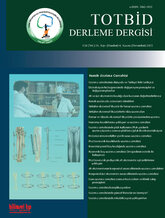
Long bone lengthening methods have an important place in orthopedics and traumatology, especially in correcting limb length differences, treating congenital deformities and repairing post-traumatic bone loss. Advances in this field in recent years have significantly improved treatment outcomes, thanks to both technological innovations and a better understanding of biological processes. Current implant systems and modern surgical approaches both increase patient safety and reduce complication rates by accelerating the healing process. In particular, intramedullary nails stand out as an alternative to traditional external fixators and make the treatment process of patients more comfortable. However, design innovations in plate systems and advanced external fixators have also increased the predictability and feasibility of lengthening procedures. These advances increase the operational success of surgeons and positively affect the quality of life of patients. In the last decade, advances in limb lengthening and congenital reconstruction have been driven by more detailed examination of bone biology and metabolic processes. In this way, clinical protocols have been based on more scientific foundations and treatment options have been diversified. Today, artificial intelligence-based planning, robotic-assisted surgical systems and personalized treatment algorithms are among the research topics that are wondered whether they will play a transformative role in this field in the future.